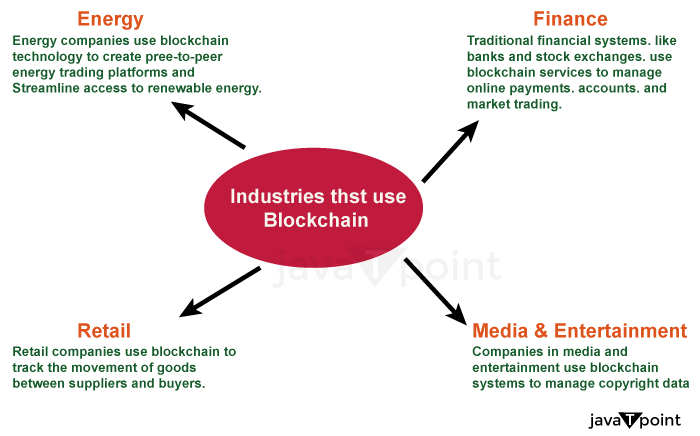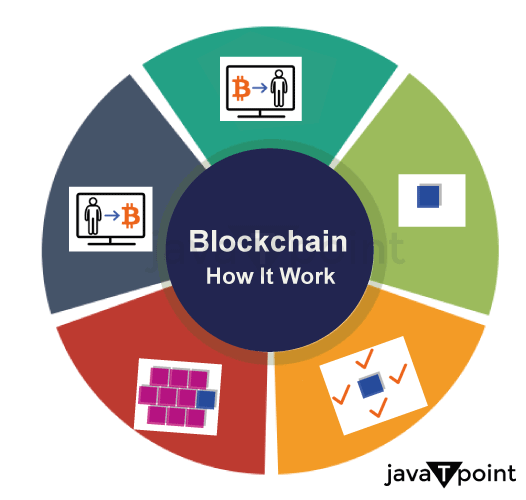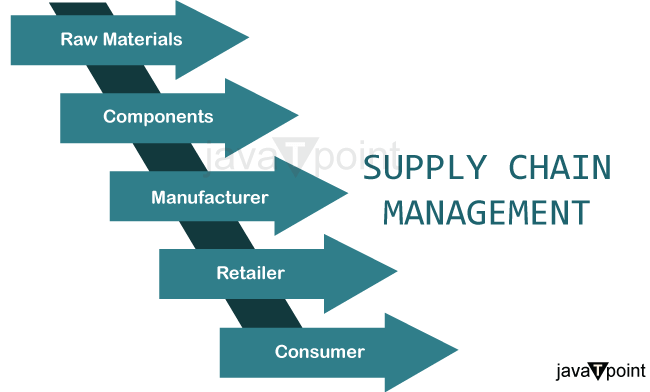How Blockchain Technology is Revolutionizing IndustriesBlockchain constitutes a transparent and secure digital ledger that keeps track of transactions between many computers. It creates an immutable ledger using a series of linked transactions that cannot be altered or removed without network consent. It has more functionality than a typical database and has built-in safeguards against unauthorized transactions. Without go-betweens like banks, blockchain technology offers safe, transparent transactions that boost productivity and cut costs. Additionally, it can give underbanked or unbanked people access to financial and banking services and lower the risk of corruption and money laundering. Supply chain management can benefit from the use of blockchain technology to boost efficiency, lower the risk of fraud, and promote transparency. Businesses may increase consumer trust, lower costs, and make better decisions by tracking a product from its point of origin to its final destination. In the supply chain, this future use of cryptocurrencies can be advantageous to both companies and customers. 
A block that has been added to the chain cannot be changed or removed, making blockchain technology extremely secure and tamper-proof. This qualifies it for applications like monetary transactions or voting systems, where confidence and security are crucial. The article's main discussion topic is how blockchain-based technology is transforming several businesses. Although blockchain technology has many benefits, there are still particular challenges to its widespread implementation. These challenges include scalability constraints, regulatory hurdles, and security risks. Improved security measures are required to stop hacking and cyberattacks. How is the Blockchain operate?The Blockchain comprises an interconnected set of nodes that validate transactions and add new blocks to the chain of blocks already in existence. Each block has a different hash code that serves as a means of identification and an allusion to the previous block's hash code. As a result, a series of blocks is formed that cannot be added to or eliminated, which renders the Blockchain an unchangeable and untouchable record of transactions. We'll look at how the blockchain system is altering how we view financial transactions and how it's being applied to upend a variety of sectors. We provide a quick introduction to the underlying blockchain mechanisms in the following steps, notwithstanding their complexity. Most of these steps can be automated using blockchain software: 
Although digital currencies like Ethereum and Bitcoin are frequently mentioned when discussing blockchain technology, their potential uses go far more profound than digital assets. Blockchain technology is revolutionizing industries in previously unthinkable ways, from managing supply chains to healthcare. This article will examine the ways that blockchain technology is reshaping several businesses and the possible advantages it may have. Let's look at some of the major sectors that blockchain technology is fundamentally reshaping and how they stand to gain. Data Retention Data distribution and storage have traditionally been handled by businesses using centralized servers, such as Cloud storage. While it has benefits like simple access, there are also disadvantages like a higher risk of hacking and just one point of failure. Blockchain-based decentralized data storage spreads information throughout an interconnected system of computers, addressing issues like data loss and breach through increased security and giving users greater authority over their data. For instance, a decentralized storage network like BNB Greenfield offers a decentralized storage infrastructure that users and DApps can utilize to generate, store, and share data with full ownership and establish a new data economy. Website hosting, secure cloud and chain storage of information, publication, and social media are a few application cases for BNB Greenfield. Creation of Content : Because of centralized governing systems, content providers in the music, recreation, and arts sectors sometimes struggle to monetize their work. Blockchain technology facilitates royalty payments while lowering content piracy and duplication. In terms of operation, it also offers a less expensive choice. Entertainment : The media and entertainment sectors have previously adopted blockchain technology in various use cases, including NFT ticketing. This method of distributing tickets is gaining popularity since it can prevent bots and assist event organizers in establishing precise resell guidelines.As it involves fans purchasing and utilizing tickets, it also offers more security and convenience in operation. Additionally, NFT tickets frequently come with extra benefits like early admission to future events, which boosts fan engagement. They also serve as a commemorative gift that fans to take in after the event. Finance : The majority of the financial sector's operations are controlled by regulatory organizations using centralized systems. As a result, there are fewer opportunities for customers to receive financial services and high entry barriers are created. Blockchain provides a substitute in the form of Decentralised Finance (DeFi), which anybody with a crypto wallet can use and which uses smart contract technology to authenticate and handle transactions.This is opening the way for the financial services sector to become more democratic as it transitions from an antiquated system to a cutting-edge one which relies on peer-to-peer exchanges. Healthcare: The usage of blockchain technology is transforming the healthcare sector. Healthcare providers can guarantee that private information is secured but shared only with authorized parties by generating an encrypted and immutable copy of patient data. Smart Contracts: Using smart contracts is another effective way to harness blockchain technology. When specific criteria are satisfied, these self-executing agreements autonomously execute the conditions of a contract, eliminating the need for go-betweens and facilitating quicker, less expensive, and more secure transactions. Industries like property management, coverage, and banking, which frequently require complicated legal agreements, might be completely transformed by smart contracts. One of the most popular blockchain platforms, Ethereum, was at the forefront of the creation of smart contracts and has drawn many companies and developers to its platform to create applications. Blockchain technology can also help to lower expenses and streamline administrative procedures. Blockchain, for instance, may be utilized to automate the processing of claims and do away with middlemen like insurance firms. Industries could be completely transformed by blockchain technology, which offers a variety of advantages, including improved security, openness, and effectiveness, as well as prospects for decentralized decision-making, ownership of information, and monetization. Technology is positioned to fuel more innovation and accelerate acceptance on a global scale as it develops and becomes more widely available. In order to achieve this, organizations should investigate how they might use blockchain technology to improve operations, and processes and create fresh possibilities while staying one step ahead of their rivals. Here are a few concepts for how Blockchain is changing the supply chain sector.Everyone despises middlemen, but they actually serve a very vital purpose. The only way to get a lot of entities to agree on a shared, accurate set of data (like who owns how much money) was before the invention of cryptocurrency and blockchain technology. 
This was done in order to appoint a neutral go-between to handle & track all transactions. Blockchain enables networks of commercial partners to exchange and concur on crucial information. Blockchain technology is also utilized by Facebook's Libra. Blockchains synchronize all information and transactions throughout the network without the need for a central middleman, and each user independently verifies each other's calculations and labor. The massive quantity of cross-checking and redundancy is what makes financial systems like Bitcoin so dependable and secure. Even though they synchronize thousands of transactions every week amongst thousands of network nodes. Most people are familiar with the statements "Blockchain is the most significant innovation since the Internet" and "Everything will be Bitcoin in a few years."People often become even more perplexed after hearing these expressions. Blockchain is a distributed, decentralized database that securely stores digital records. Additionally, even though all documents are open to the public and transparent, they are not changed, removed, or amended. Every piece of data that is added to the Blockchain is permanently damaged. A new "Block" is registered on the chain for every transaction or record added to the Blockchain. In essence, Blockchain offers a way to retain records that is more effective for organizations and individuals to use while still being more secure. The probable future of robotics is being shaped in various ways by BlockChain and AI. Today, we enjoy the convenience of having high-quality, ready-made things at our doorstep. It's simple to walk into an outlet mall, buy an item of clothing, and not give the clothing's origin or manufacturing process any thought. The origin of that shirt is in the way it was made. From the supplier of the raw ingredients to the merchant that is providing you the finished product, a lot of hands must be involved in order for that jersey or other goods to reach the store shelves. The supply chain is the mechanism that connects all the parties engaged in delivering the finished good to you. Provenance and traceability of the productConsumers want to be able to verify the authenticity of the goods they purchase, whether they are purchasing food, diamonds, or automobile parts. Customers can have faith that data wasn't modified along the process because it can be made public to all those who have been granted access to view it and generally cannot be changed by a single organization. Additionally, time-stamping can offer only one source of truth regarding the history of the product, from the gathering of the materials through the stocking in a store. Knowing a product's whole route has many advantages, including greater product safety, decreased fraud, improved forecasting, and industry-wide cooperative planning. As an illustration, in 2018, the US saw its worst E. coli outbreak before 2006 when 210 individuals fell ill, and five of them passed away from eating romaine lettuce that was contaminated. Up until the Centres for Prevention and Control of Diseases were able to identify the source to a manufacturer in Yuma, Arizona, the panic led to a worldwide recall of stock. However, Blockchain would make it possible to fully understand each lettuce's history, so information from the earliest instances could be utilized to rapidly identify the outbreak's source. Only those with a risk of E. coli infection should have been removed from the shelves, as opposed to a general recall. Immutable records that can be tracedImmutable blockchain data and digital signatures are both necessary to verify information ownership. If several businesses collaborate, they can utilize blockchain technology to store information on the ownership and location of their raw materials and finished goods. The information is kept on the Blockchain, which provides a complete history of every component in the supply chain. The movement of materials from one enterprise to another is visible to every participant in the supply chain. These data recordings are extremely traceable and cannot be changed. When a product is faulty, the problem's root cause can be found more rapidly, which boosts the effectiveness of merchandise recalls and the resolution of disruptions between chain parties. Businesses may make wiser judgments if their product flow inventory is visible and complete. It increases the trust of customers and stakeholders in the quality of the products. A further strategy for battling fraud and counterfeiting is the increased transparency. Protection of Intellectual Property (IP)In the digital age, defending rights to intellectual property has grown more difficult. By enabling artists to safely record and date their creations on a decentralized ledger, blockchain technology presents a potential solution. This electronic fingerprint can serve as unambiguous evidence of ownership and aid in preventing unauthorized dissemination or copying. Businesses like Give and Attached have begun providing blockchain-based IP protection services, focusing on sectors like the arts, music, and photography. Voting and governanceLastly, blockchain technology can be used to improve voting procedures and government operations. Blockchain can assist in protecting the honesty and openness of elections by employing a decentralized and tamper-proof ledger, lowering the possibility of fraud and manipulation. Additionally, decision-making processes may be automated, transparency can be increased, and stakeholder participation can be increased with the help of blockchain-based governance systems. Blockchain-based voting technologies are being developed by businesses like Follow My Vote or Horizon State. Blockchain Participation in industries : Blockchain technology can help supply chains handle some of their most pressing problems because it offers new methods for storing, transmitting, and sharing data. A blockchain is essentially a special database system that users in a decentralized network construct and maintain. It provides a secure and dependable infrastructure for information and transactions that may be digitally documented, such as the interchange of data and assets across supply chain players. Each stakeholder retains a copy of the distributed ledger since it is decentralized, preventing just one point of failure and data loss. This also means that blockchains are very hard to change or tamper with. Such precise and impenetrable records safeguard data integrity and are accessible to facilitate regulatory compliance. In the end, Blockchain can improve supply chain transparency and efficiency, which will benefit everything from payment to delivery to warehousing. Cost reductionWaste is produced in large amounts by supply chain inefficiencies. This is particularly common in sectors that produce perishable items, like the food sector. Blockchain's enhanced monitoring and data transparency can aid corporate identification. they can execute focused cost-saving efforts by eliminating these inefficient inefficiencies. ConclusionBlockchain has the potential to revolutionize our consumption habits, from the clothes we dress to the foods we eat. Solutions must be implemented carefully as they emerge since, along with all these hopes come concerns about hype, data security, interoperability, and access.This doesn't happen by mistake like it does with other technologies. It is planned. For this reason, we're collaborating with over 95 people from around the globe to design tools for decision-making for the supply chain actors. The aim? shifting supply chains in the direction of solutions that are open to everybody, interoperable, and trustworthy. |
 For Videos Join Our Youtube Channel: Join Now
For Videos Join Our Youtube Channel: Join Now
Feedback
- Send your Feedback to [email protected]
Help Others, Please Share










